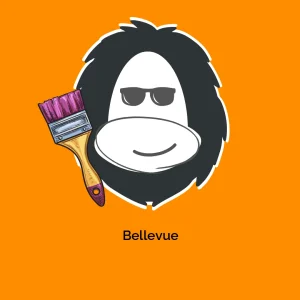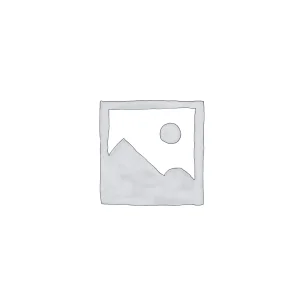Exploring the World of Foodie Blogs
Foodie blogs are a delightful intersection of culinary passion and digital storytelling. These blogs aren’t just about sharing recipes; they encapsulate experiences, reviews, cooking tips, and even lifestyle elements that revolve around food. In a world where food defines culture and connects people, a foodie blog serves as a window into various culinary landscapes. Whether you’re someone who loves to cook, a food enthusiast eager to try new recipes, or simply someone who enjoys reading delightful content about food, diving into the world of foodie blogs can be a rewarding experience.
What Makes a Foodie Blog Stand Out?
When we talk about a successful foodie blog, a few key elements come to play. First defining feature is the content quality. High-definition photographs paired with scrumptious recipes engage readers more effectively. The storytelling aspect is equally essential; sharing anecdotes and personal experiences related to food can develop a rapport with readers.
Another critical ingredient is niche specificity. For instance, some bloggers focus solely on vegan cuisine; they explore plant-based recipes, nutrition benefits, and sustainable living practices. Others might opt for a broader approach – offering a variety of recipes spanning different cuisines and cultures. No matter the niche, the goal is to create a steady flow of engaging and valuable content for the audience.
SEO Optimization is also vital. When crafting content, utilizing keywords strategically can make a world of difference in getting noticed. A foodie blog should incorporate not just the primary keywords, but also long-tail keywords related to specific recipes, ingredients, or culinary techniques.
Essential Components of a WordPress Foodie Blog
Creating a food blog requires careful consideration of several essential components. Here are some fundamental resources and features:
1. High-Quality Themes
A blog’s aesthetic plays a critical role in attracting its audience. Choosing the right WordPress theme designed specifically for food blogs can significantly enhance the user experience. Themes like CheerUp, TinySalt, and EasyMeals come equipped with multiple layouts, aesthetic designs, and robust features that cater to food bloggers. They allow you to display high-quality images, embed videos, and integrate various functionalities seamlessly.
2. Recipe Plugins
Another essential for any foodie blog is a reliable recipe plugin. These plugins facilitate the inclusion of well-structured recipes while optimizing them for better visibility on search engines. A popular choice among bloggers is WP Recipe Maker, which not only provides an appealing format for recipe presentation but also helps with SEO optimization. The plugin allows foodies to showcase ingredients, cooking instructions, ratings, and nutritional information effectively.
3. Engaging Visual Content
Visuals are crucial when it comes to food blogs. High-quality images depicting the food alongside aesthetic backgrounds or in the middle of preparation add a lot of value to the written content. Incorporating videos, infographics, or even step-by-step recipe grids can draw readers in and keep them engaged. Programs such as Canva can help you design visually appealing graphics that complement your blog’s aesthetic.
4. Consistent Blogging Schedule
Building an audience requires consistency. Establishing a regular posting schedule helps keep readers engaged and shows them that the blog is active. Whether it’s weekly, bi-weekly, or monthly, maintaining this schedule can attract more returning visitors who anticipate new content.
5. Social Media Integration
A successful foodie blog doesn’t just exist within its own platform; it extends into social media realms as well. Platforms like Instagram and Pinterest are highly visual, and they complement foodie blogs well. By sharing tantalizing photos or snippets of blog posts on social media, bloggers can drive significant traffic to their main site.
6. Community Engagement
Fostering a sense of community can transform a simple blog into a culinary hub. Encouraging comments, feedback, or sharing encouragement through social media already creates engagement among the followers. Additionally, hosting cooking challenges or recipe trials can also enhance community interaction.
The Evolution of Foodie Blogs
The landscape of foodie blogs has evolved considerably over the years. Initially, cooking blogs focused on sharing recipes alone, but today, they’ve expanded into lifestyle and culture. Many modern food blogs delve into health-focused content, plant-based diets, and even cultural food histories. Food trends such as meal prepping, no-food-waste cooking, and international cuisines have also found a significant place within the blogging community.
Moreover, many food bloggers are harnessing the power of video. The increasingly popular cost-effective platform, TikTok, has propelled food blogging into a more dynamic presence, offering concise recipes and cooking tips. Short, engaging clips attract attention and can sometimes go viral!
Foodie Blog Marketing and Monetization Strategies
While passion drives many food bloggers, making their platform financially sustainable often becomes a consideration too. Various monetization strategies allow bloggers to generate income through their love for food:
-
Affiliate Marketing: By reviewing and promoting kitchen gadgets, cookbooks, or food subscriptions, bloggers can earn a commission on sales made through their links.
-
Sponsored Posts: Many food brands seek out bloggers to feature their products in posts or social media to tap into their audience.
-
Ad Revenue: Enabling ads through platforms like Google AdSense allows bloggers to earn passive income by simply allowing advertisements to be displayed on their site.
-
Selling e-Books: Bloggers can compile their favorite recipes or cooking tips into e-books and sell them directly from their site.
A Glimpse into Successful Foodie Blogs
Numerous successful foodie blogs showcase diversity in approach and content. A few to consider:
-
Pinch of Yum: This blog is an incredible resource for innovative cooking ideas, complete with mouth-watering photos, personal stories, and helpful food tips. The blend of relatable writing and professional food photography makes it stand out.
-
Minimalist Baker: This blog is a great resource for those seeking easy, plant-based recipes that require ten ingredients or fewer. The blogger creatively combines minimalism in cooking with delightful recipes bringing joy to those exploring vegan diets.
-
Smitten Kitchen: Founded by Deb Perelman, this blog highlights various recipes that are approachable and infused with personal background stories surrounding each dish.
-
Food52: More than just a blog, it’s a community of home cooks and enthusiasts that share recipes, kitchen tips, and culinary culture through its vibrant online platform.
The Future of Foodie Blogs
Considering the advancements in technology, the future of foodie blogs looks promising. New mediums for storytelling—like augmented reality (AR) or virtual reality (VR)—offer innovative pathways that can make cooking tutorials more immersive. Moreover, cooking segments featuring live interactions are likely to gain popularity.
As plant-based and sustainable food trends continue to gain traction, it’s likely that these themes will further influence the food blogging realm. Readers are looking for authentic, transparent content that focuses on health and sustainability, and bloggers who can tap into these themes may set themselves apart.
Writing a successful foodie blog is more than a creative endeavor; it’s about sharing passion, artistry, and knowledge regarding food. Whether you are just beginning your journey or you aim to elevate your current blogging game, understanding trends, community engagement, and top-notch content creation practices can lead your foodie blog to thrive in a diverse and ever-evolving digital ecosystem.
Crafting your unique flavor in the expansive blogging landscape can ignite meaningful conversations, inspire individuals, and connect cultures over a shared love for food, making the venture well worth it.
Foodie blog: Download it for Free
You see, downloading Foodie blog Themes for free on OrangoGPL is 100% viable and within the law.
Truly, even downloading a cracked Foodie blog is law-abiding, because the license it is distributed under is the GPL (General Public License), and this license allows anyone its free distribution.
This way, don’t be concerned: If you wish to buy Foodie blog cheaply or, directly, to download Foodie blog Themes nulled and, so, get it 100% free, now, it’s possible easily and legally.
Download Foodie blog GPL: A great solution for startup entrepreneurs
It doesn’t matter how you name it: Buying Foodie blog on resale, download Foodie blog Themes GPL, download Foodie blog without license or download Foodie blog nulled.
It is something absolutely legal and something necessary for every new entrepreneur.





Reviews
There are no reviews yet.